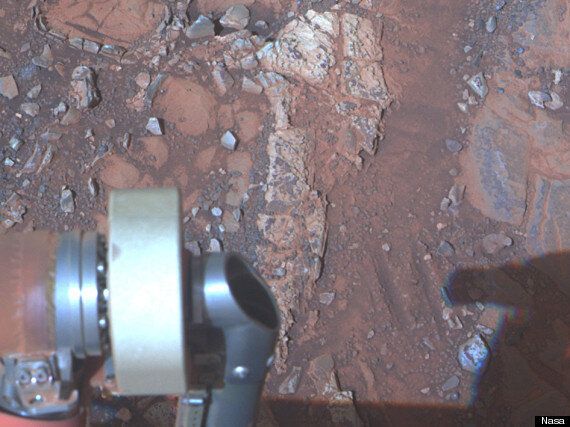
Nasa's incredibly long-lived Mars rover Opportunity has produced yet more amazing science - more than nine years after it was supposed to have shut down.
The hardy record-breaking robot has found a rock which is rich in clay minerals - a clear indication that drinkable water once flowed on the red planet's surface.
The find may be the "most significant" in Opportunity's decade-long history.
The robot found the rock - named "Esperance" by Nasa - in May 2013, almost ten years to the day after it left Earth.
The space agency said the find was especially significant because previous examples of water-weathered rocks found by Opportunity suggested high levels of sulphuric acid.
That would indicate that any water once present on the surface would not have been likely to support life on its own.
But the new clay minerals found by Opportunity only form in liquids that have a relatively neutral pH, meaning chemistry may have occurred that could have led to the emergence of life.

Above: Clay mineral content has been found in the Esperance rock.
"The Esperance results are some of the most important findings of our entire mission," said Steve Squyres, principal investigator for the mission.
"The composition tells us about the environmental conditions that altered the minerals. A lot of water moved through this rock."
The rover will now head to a new destination, 'Solander Point', which will give it access to a taller stack of geologically layered rocks.
"Getting to Solander Point will be like walking up to a road cut where you see a cross section of the rock layers," said Ray Arvidson of Washington University and deputy principal investigator for the mission.
Nasa's twin rovers, Spirit and Opportunity, landed on mars in January 2004. Both completed their three-month prime missions and have since yielded years of extra "bonus" science.
Spirit has since ceased operations, after becoming stuck in sand, and was officially retired in 2010. Opportunity is still going strong - although Nasa cautions it does show "symptoms of ageing" such as loss of motion in some joints.
Meanwhile the newer Curiosity rover is just eleven months into its own mission to explore the surface for signs of ancient life.